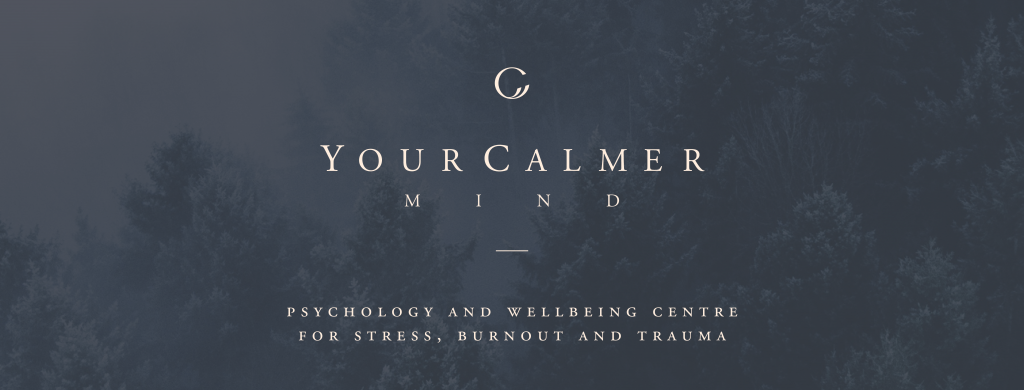
As stated in my previous article a certain amount of stress in life is normal, and often serves a useful purpose! Physically, stress increases your heart rate, changes your breathing, and releases hormones into your system and it can be a good thing when it helps you be productive, motivated to achieve goals or get through difficult situations. It keeps you alert, focussed and ready to face any challenges. However, stress can also become maladaptive when it is prolonged, if it makes you feel overwhelmed, frozen, or as though you can’t think at all.
There are a few different types of stress disorders that can arise depending on the cause of the stress. Prolonged or chronic stress can lead to burnout (also known as a nervous breakdown), whereas traumatic events can trigger acute stress disorder or post-traumatic stress disorder.
Acute Stress Disorder and Post-Traumatic Stress Disorder
Acute Stress Disorder (ASD) and Post-Traumatic Stress Disorder (PTSD) are psychological injuries that can develop after experiencing a traumatic event. From a psychology perspective, “trauma” refers to an experience that is emotionally painful, distressful, or shocking, and which often results in lasting mental and physical effects.
Acute Stress Disorder involves symptoms that last a minimum of three days, up to one month following exposure to one or more traumatic events. If symptoms persist beyond a month, the person will be diagnosed with Post-Traumatic Stress Disorder.
Anyone can develop PTSD following a traumatic event, but people are at greater risk if the event involved deliberate harm such as physical or sexual assault or they have had repeated traumatic experiences such as childhood sexual abuse or living in a war zone. Apart from the event itself, risk factors for developing PTSD include a history of trauma or previous mental health problems, as well as ongoing stressful life events after the trauma and an absence of social supports.
Individuals may be at greater risk for developing a psychological injury if they have previously been diagnosed with a mental illness, perceive the traumatic event to be very severe, have an avoidant coping style when experiencing distress, or have a history of previous trauma.
Around 12 per cent of Australians will experience PTSD in their lifetime and women are more likely to develop acute stress disorder than men. Serious accidents are one of the leading causes of PTSD in Australia.
Symptoms
Symptoms of both ASD and PTSD can develop after a person experiences or witnesses an event involving a threat or actual death, serious injury, or physical violation to the individual or others. This could be a car or other serious accident, physical or sexual assault, war or torture, or disasters such as bushfires or floods.
Feeling strong reactions such as fear, anger or sadness are natural after a traumatic event. For most people, these feelings will pass with time and support from friends and family. For people who develop ASD or PTSD, these feelings are intensely distressing and if left untreated, can last for a long time.
The symptoms of PTSD may interfere with the person’s ability to carry on their everyday life, work and relationships. More specifically, symptoms of ASD and PTSD include:
- Re-living the traumatic event
- Heightened vigilance or wound up
- Avoiding reminders of the event
- Feeling emotionally numb or dissociative
- Negative mood
- It’s not unusual for people with PTSD to experience other mental health problems at the same time. These may have developed directly in response to the traumatic event or have followed the PTSD. These additional problems, most commonly depression, anxiety and alcohol or drug use, are more likely to occur if PTSD has persisted for a long time
- People with acute stress disorder may also experience a great deal of guilt about not being able to prevent the trauma, or for not being able to move on from the trauma more quickly.
- Panic attacks are common in the month following a trauma.
- Children with ASD or PTSD may wet the bed, be unable to speak, act out the scary event during playtime, or experience anxiety related to their separation from caregivers.
- Older children and teens are more likely to show symptoms like those seen in adults. They may also start ‘acting out’ and develop disruptive and destructive behaviours. It’s important for parents and carers to seek help early if they think a young person is developing PTSD.
If a person has been through a traumatic event and has experienced a combination of the above symptoms for a month or more, then they may be experiencing PTSD.
Treatments
With treatment, people with ASD or PTSD can recover and return to their normal lives. Getting help early is best, as it helps speed up recovery and reduce the risk of developing other anxiety disorders, substance abuse issues, and mood disorders such as depression or bipolar disorder, which often affect people with untreated PTSD.
If you feel very distressed at any time after a traumatic event, talk to your doctor or other health professional. If you experience symptoms of ASD or PTSD that persist beyond two weeks, a doctor or a mental health professional may recommend starting treatment.
Support from family and friends is very important for most people. Trying, as far as possible, to minimise other stressful life experiences allows the person to focus more on his/her recovery.
Effective treatments are available. Most involve psychological treatment (talking therapy), trauma-focussed therapy or Eye Movement Desensitisation Reprogramming (EMDR) but medication can also be prescribed in some cases. Drug treatments are not recommended within four weeks of symptoms appearing unless the severity of the person’s distress cannot be managed by psychological means alone. Generally, it’s best to start with psychological treatment rather than use medication as the first and only solution to the problem. Additionally, stress-reduction strategies such as mindfulness and relaxation strategies can help people cope with and ultimately reduce symptoms of acute stress disorder.
Other things to know
ASD and PTSD can affect anyone who has been through a traumatic event, but not all sufferers of ASD or PTSD have experienced a dangerous event themselves. Some people develop PTSD after a family or friend experiences trauma. The death of a loved one can also lead to PTSD.
Time does not heal all wounds. PTSD can take years to develop and childhood trauma may still affect adults many years after the traumatic event happened. People with PTSD are not weak, nor need to “get over it”, they need professional support and care. They cannot ‘snap out of it’ without treatment. Their behaviour is a function of injury, not weakness.
It’s important to remember that everyone experiences trauma differently. An event which is traumatising for one person may not be too distressing for another person. Everyone has a different capacity for trauma, which is informed by a combination of risk factors including neurobiology, past experiences and genetics.
If you are not sure, reach out to your GP, call us on 08 8339 8313 or email at [email protected]

Andrew Grant is Your Calmer’s founder and Principal Psychologist. He has experience and a particular interest in supporting first responders and employees dealing with acute stress, burnout and post traumatic injuries.



